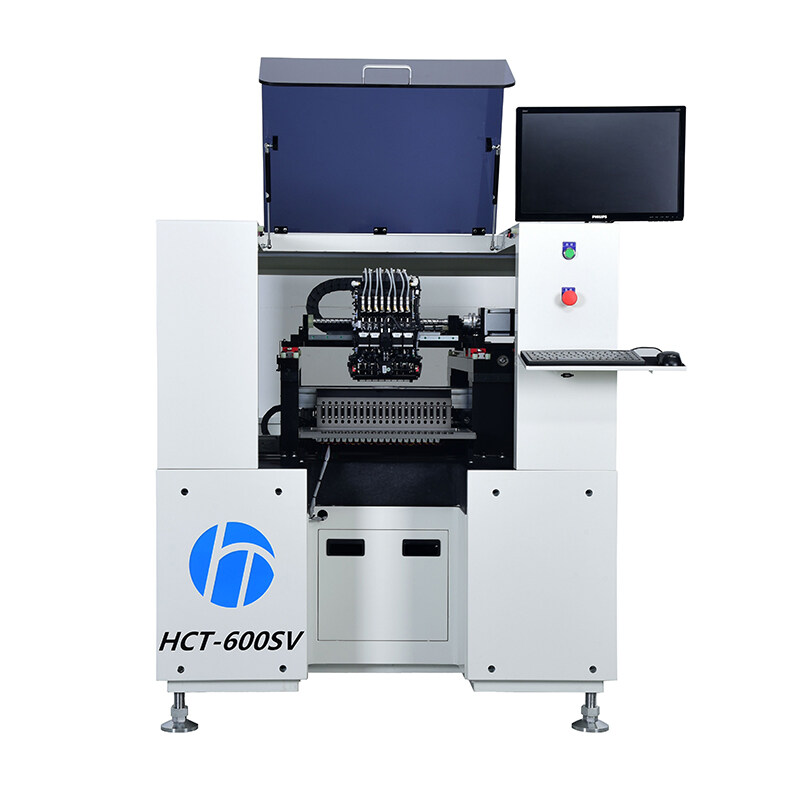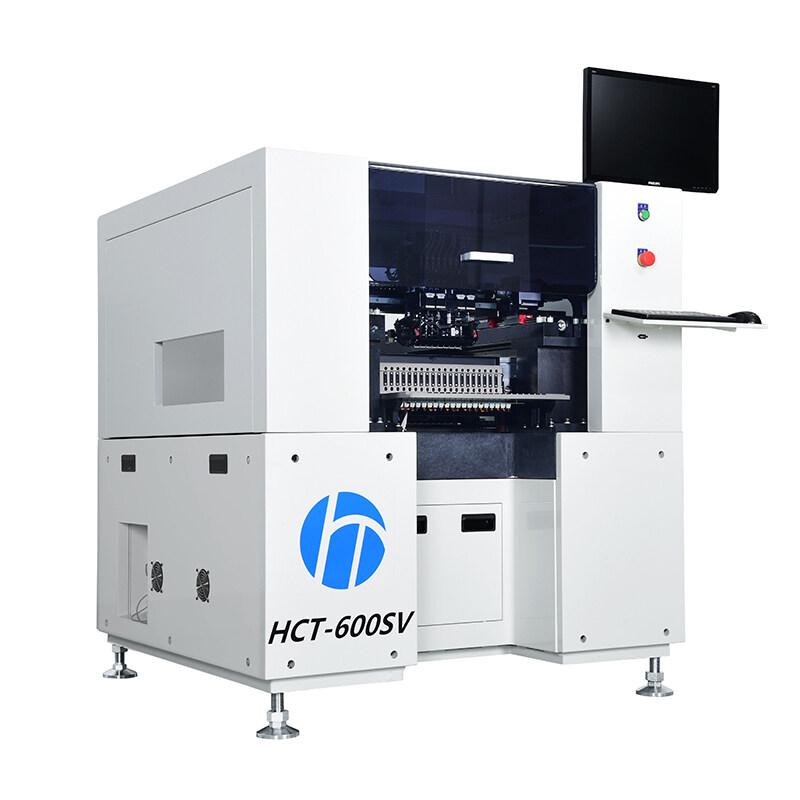E-Mail-Formatfehler
emailCannotEmpty
emailDoesExist
pwdLetterLimtTip
inconsistentPwd
pwdLetterLimtTip
inconsistentPwd


Deep Dive into Desktop SMT LED Placement Machines: Unraveling the Engineering Marvels
Deep Dive into Desktop SMT LED Placement Machines: Unraveling the Engineering Marvels
Advanced Vision Systems: The Eyes of Precision
At the heart of every desktop SMT LED placement machine lies a sophisticated vision system, comprising high-resolution cameras, powerful image processing algorithms, and intelligent pattern recognition software. These components work in tandem to:
- Component Recognition: By analyzing the unique features and characteristics of surface-mount LEDs, the vision system identifies and verifies each component before placement, ensuring accuracy and consistency.
- Alignment and Positioning: Real-time feedback from the vision system guides the robotic arms in precisely aligning LEDs with the target locations on the PCB. Subpixel accuracy and closed-loop control mechanisms guarantee submicron-level placement accuracy, even for the smallest components.
Robotic Precision: Mastering the Art of Pick-and-Place
The robotic arms of desktop SMT LED placement machines epitomize precision engineering, combining speed, agility, and reliability to execute intricate pick-and-place tasks with unparalleled accuracy. Key features include:
- High-Speed Actuators: Utilizing advanced servo motors and linear actuators, the robotic arms achieve blistering speeds while maintaining smooth, controlled movements. This enables rapid component pickup and placement without compromising accuracy or repeatability.
- Dynamic Path Planning: Sophisticated motion planning algorithms optimize the trajectory of the robotic arms, minimizing cycle times and maximizing throughput. Adaptive path correction algorithms ensure seamless operation, even in the presence of external disturbances or variability in component dimensions.
Feeder Systems: The Lifeline of Component Supply
Feeder systems play a pivotal role in ensuring uninterrupted production by delivering surface-mount LEDs to the placement machine in a timely and reliable manner. Key attributes include:
- Multi-Channel Configuration: Feeder trays are equipped with multiple channels to accommodate different LED sizes and packaging formats. This versatility enables seamless integration with diverse production workflows and minimizes changeover times between production runs.
- Smart Feeder Control: Advanced feeder control algorithms optimize component feed rates, prevent jams, and minimize downtime. Real-time monitoring and feedback mechanisms alert operators to potential issues, allowing for proactive intervention and troubleshooting.
Software Intelligence: Empowering Operators with Control and Insight
Behind the intuitive user interfaces lies a powerhouse of software intelligence, empowering operators with unprecedented control and insight into the production process. Key functionalities include:
- Parametric Programming: Intuitive programming interfaces enable operators to define placement parameters such as component orientation, spacing, and rotation angles with precision and ease. Graphical feedback tools visualize the placement process in real-time, facilitating rapid setup and optimization.
- Process Monitoring and Analytics: Built-in monitoring and analytics tools track key performance metrics such as placement yield, cycle times, and defect rates. This data-driven approach enables operators to identify trends, diagnose issues, and implement corrective actions proactively, ensuring optimal machine performance and product quality.
Overcoming Challenges: Engineering Solutions for Success
Component Variation and Compatibility
The diverse range of surface-mount LEDs available in the market presents a challenge, as each component may differ in size, shape, and packaging. Engineering solutions to address this challenge include:
- Adaptive Gripper Design: Modular gripper systems with interchangeable jaws accommodate a wide range of component sizes and shapes, ensuring compatibility with diverse LED configurations.
- Dynamic Vision Calibration: Automated vision calibration routines adjust camera parameters on-the-fly to adapt to variations in component appearance and lighting conditions, ensuring accurate component recognition and alignment.
Feeder Reliability and Optimization
Feeder reliability is critical to maintaining uninterrupted production flow and minimizing downtime. Engineering strategies to enhance feeder reliability and optimization include:
- Smart Feed Control Algorithms: Predictive feed control algorithms anticipate component demand based on real-time production data, optimizing feeder replenishment schedules and minimizing the risk of component shortages.
- Fault-Tolerant Design: Redundant feeder mechanisms and failover systems provide backup functionality in the event of feeder jams or malfunctions, ensuring continuous operation and minimizing production disruptions.
Operator Training and Skill Development
Effective operation requires specialized training and skill development to harness their full potential. Engineering solutions to facilitate operator training and skill development include:
- Virtual Simulation Environments: Interactive virtual simulation environments replicate real-world operating conditions, allowing operators to practice setup, programming, and troubleshooting procedures in a risk-free environment.
- Online Learning Platforms: Web-based training modules and educational resources provide operators with on-demand access to instructional materials, tutorials, and best practices, empowering them to enhance their skills and knowledge at their own pace.
Case Studies: Real-World Success Stories
Case Study 1: Miniaturized Wearable Electronics
A leading manufacturer of wearable electronic devices sought to miniaturize their product designs without compromising performance or reliability. By leveraging a desktop SMT LED placement machine equipped with advanced vision systems and precision robotic arms, they achieved remarkable gains in production efficiency, component density, and product miniaturization, positioning themselves as a market leader in the burgeoning wearable technology sector.
Case Study 2: High-Volume Consumer Electronics
A multinational electronics corporation faced escalating demand for their flagship consumer electronic products, necessitating a scalable and cost-effective manufacturing solution. By deploying a fleet of desktop SMT LED placement machines across their production facilities, they streamlined their assembly processes, reduced cycle times, and achieved significant cost savings, enabling them to meet market demand while maintaining profitability in a competitive industry landscape.
The Path Forward: Innovations and Trends Shaping the Future
Nanoscale Assembly and Micro-LED Integration
As electronic devices continue to shrink in size and complexity, the demand for nanoscale assembly and micro-LED integration capabilities will grow exponentially. Desktop SMT LED placement machines will evolve to meet this demand, leveraging advancements in nanotechnology, materials science, and microfabrication techniques to enable the production of ultra-compact, high-performance electronic devices with unprecedented levels of functionality and integration.
Autonomous Manufacturing and AI-Driven Optimization
The convergence of desktop SMT LED placement machines with autonomous manufacturing technologies and artificial intelligence (AI) algorithms will revolutionize the production landscape, enabling self-optimizing production systems that adapt dynamically to changing demand, process variability, and environmental conditions. AI-driven predictive maintenance algorithms will anticipate and prevent equipment failures before they occur, maximizing uptime and productivity, while machine learning-based process optimization algorithms will continuously refine and optimize manufacturing parameters to improve quality, efficiency, and yield.
Sustainable Manufacturing Practices and Green Technologies
Environmental sustainability is a growing imperative for the electronics industry, driving demand for green technologies and sustainable manufacturing practices. The SMT LED placement machines will play a pivotal role in this transition, with manufacturers prioritizing energy efficiency, recyclability, and environmental stewardship in the design and operation of their equipment. From eco-friendly materials and biodegradable substrates to energy-efficient manufacturing processes and closed-loop recycling systems, sustainable solutions will become increasingly integrated into the fabric of electronics manufacturing, ensuring a greener, cleaner, and more sustainable future for generations to come.
Conclusion: Engineering Excellence Redefining the Future of Electronics Manufacturing
In conclusion, desktop SMT LED placement machines represent the pinnacle of engineering excellence, combining cutting-edge technology, precision craftsmanship, and relentless innovation to redefine the future of electronics manufacturing. With their advanced vision systems, robotic precision, and intelligent software interfaces, these remarkable machines empower manufacturers to achieve new levels of productivity, efficiency, and quality in the production of electronic devices. As technology continues to advance and evolve, so too will the capabilities of desktop SMT LED placement machines, driving progress, innovation, and prosperity in the electronics industry and beyond. Embracing this wave of engineering excellence, we embark on a journey of discovery and transformation, unlocking new possibilities and shaping a brighter future for generations to come.

